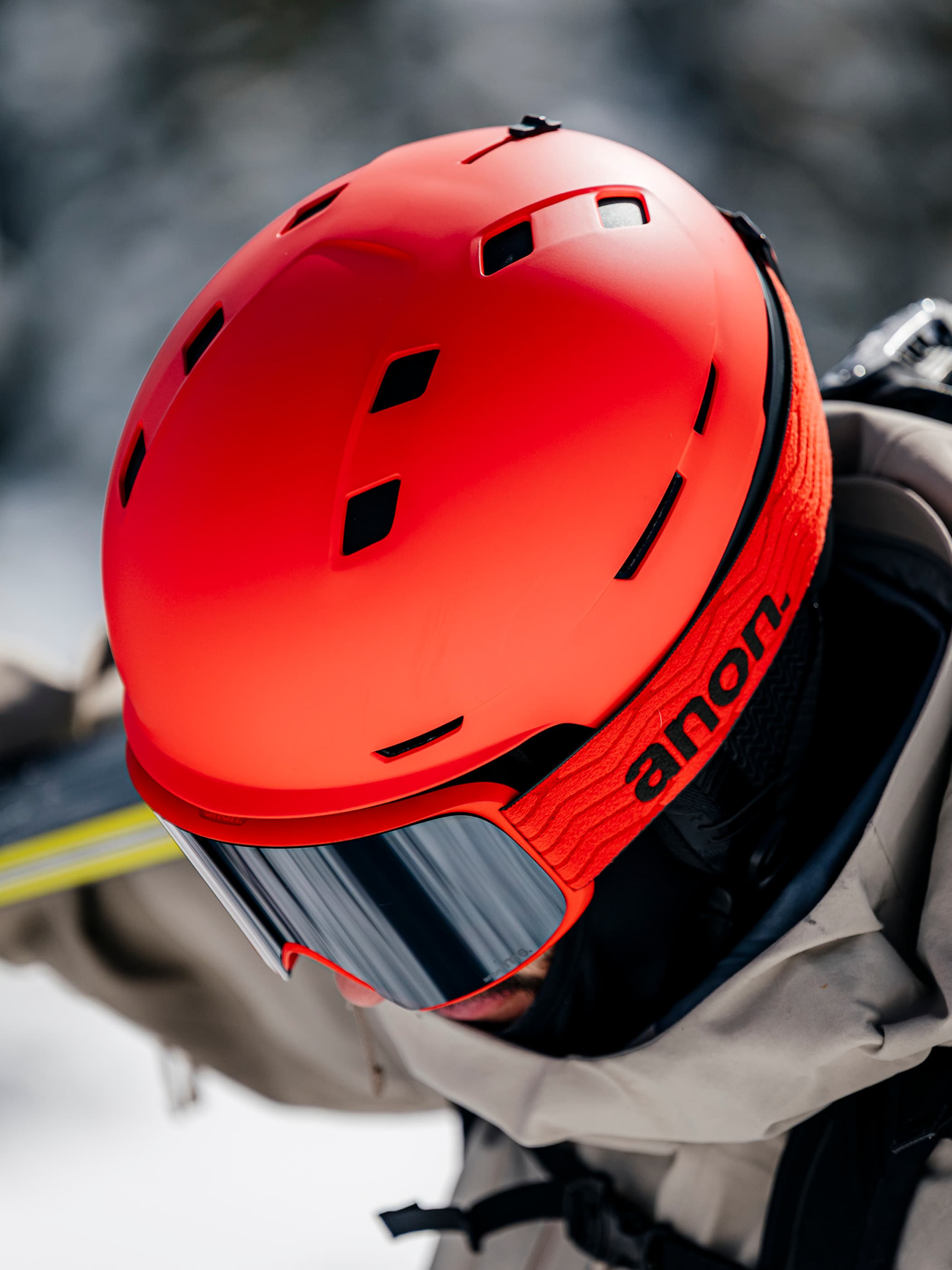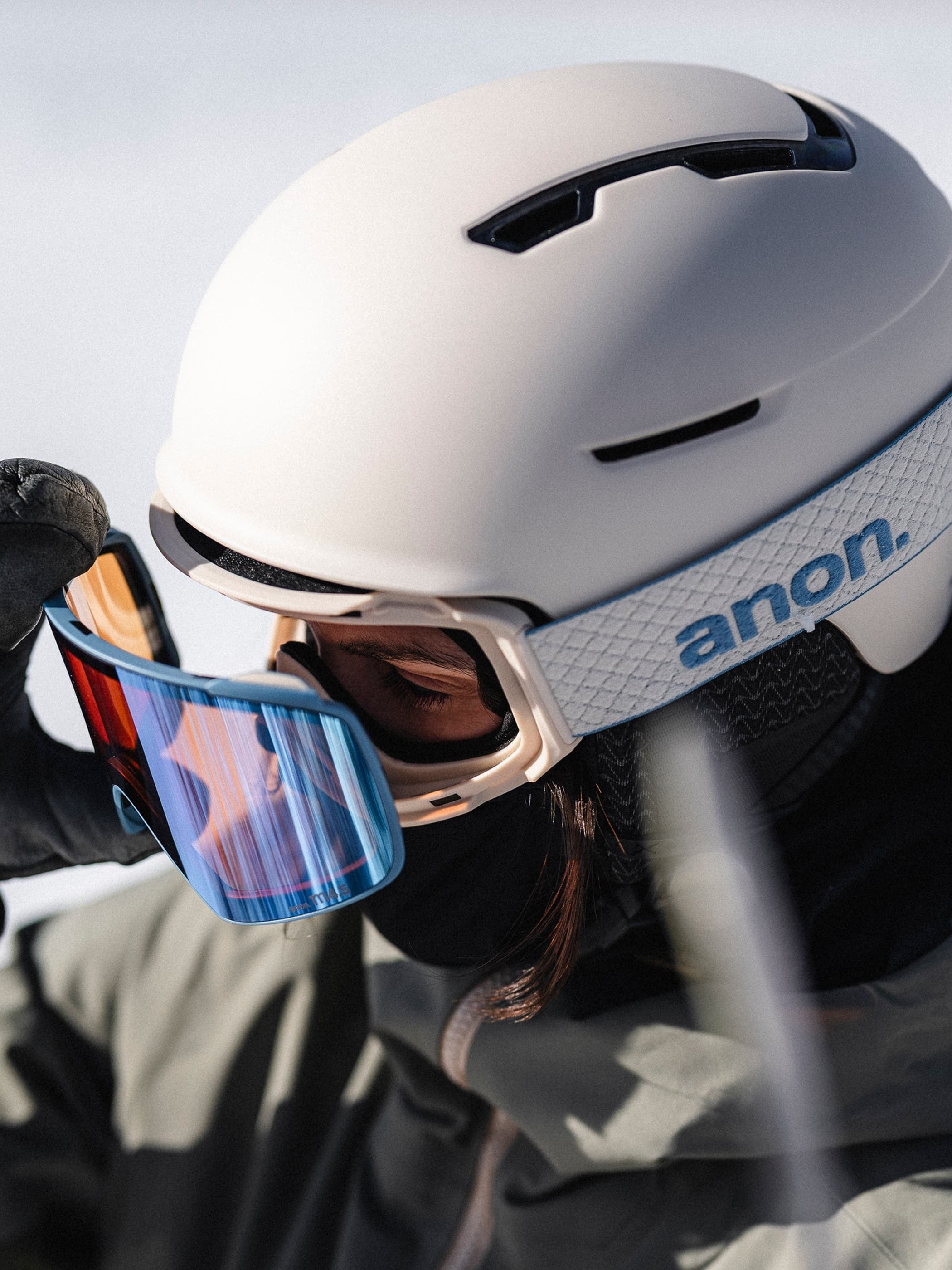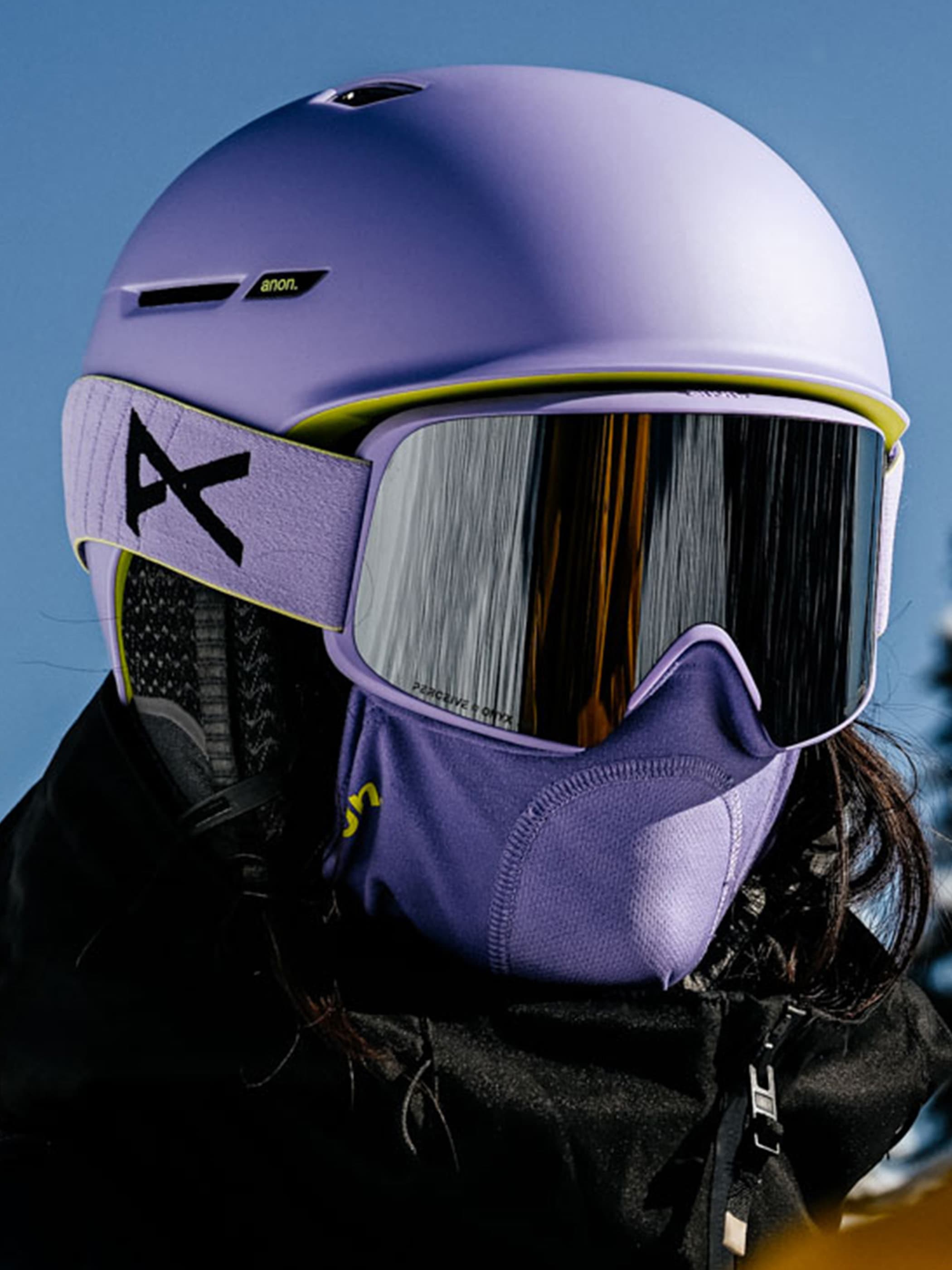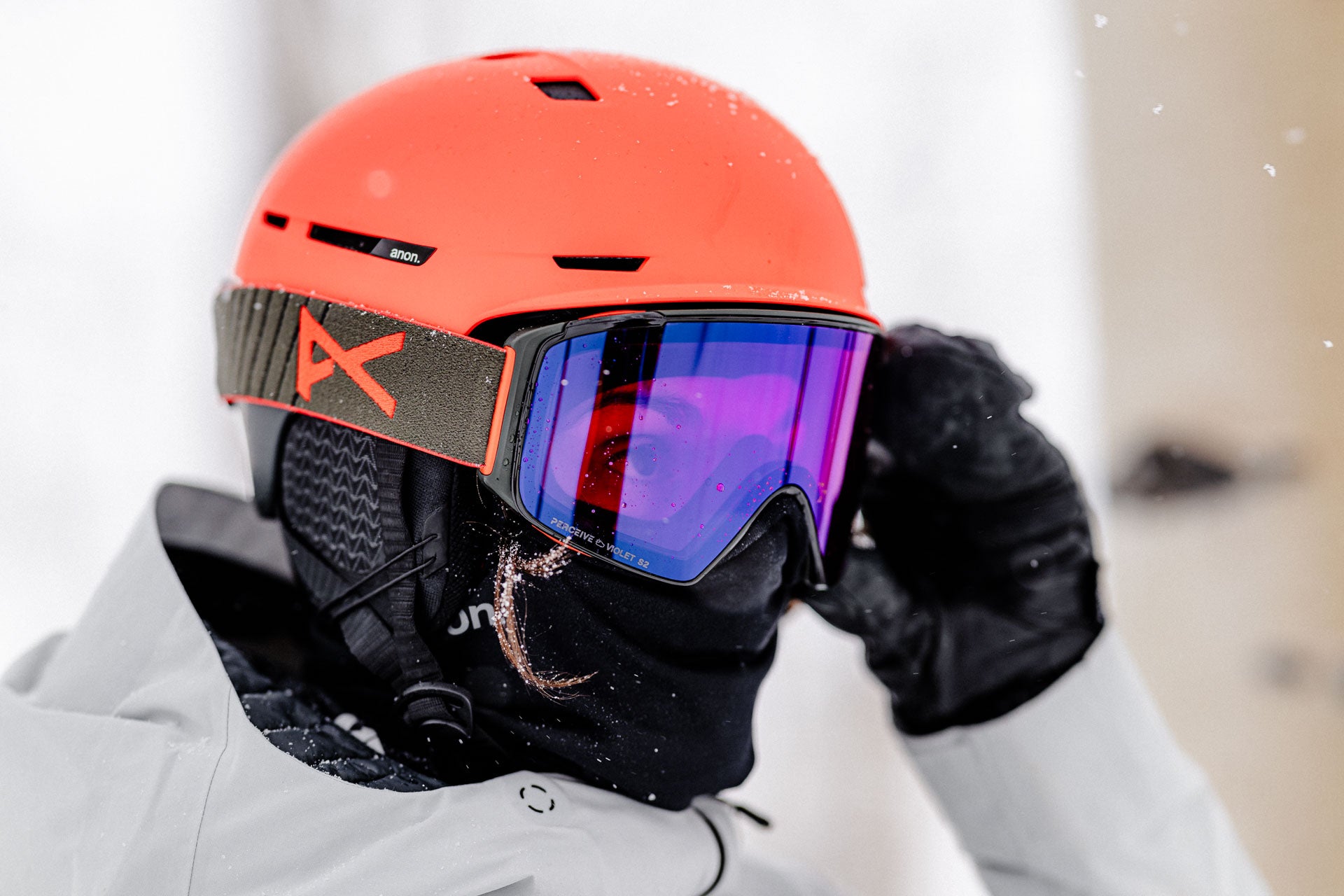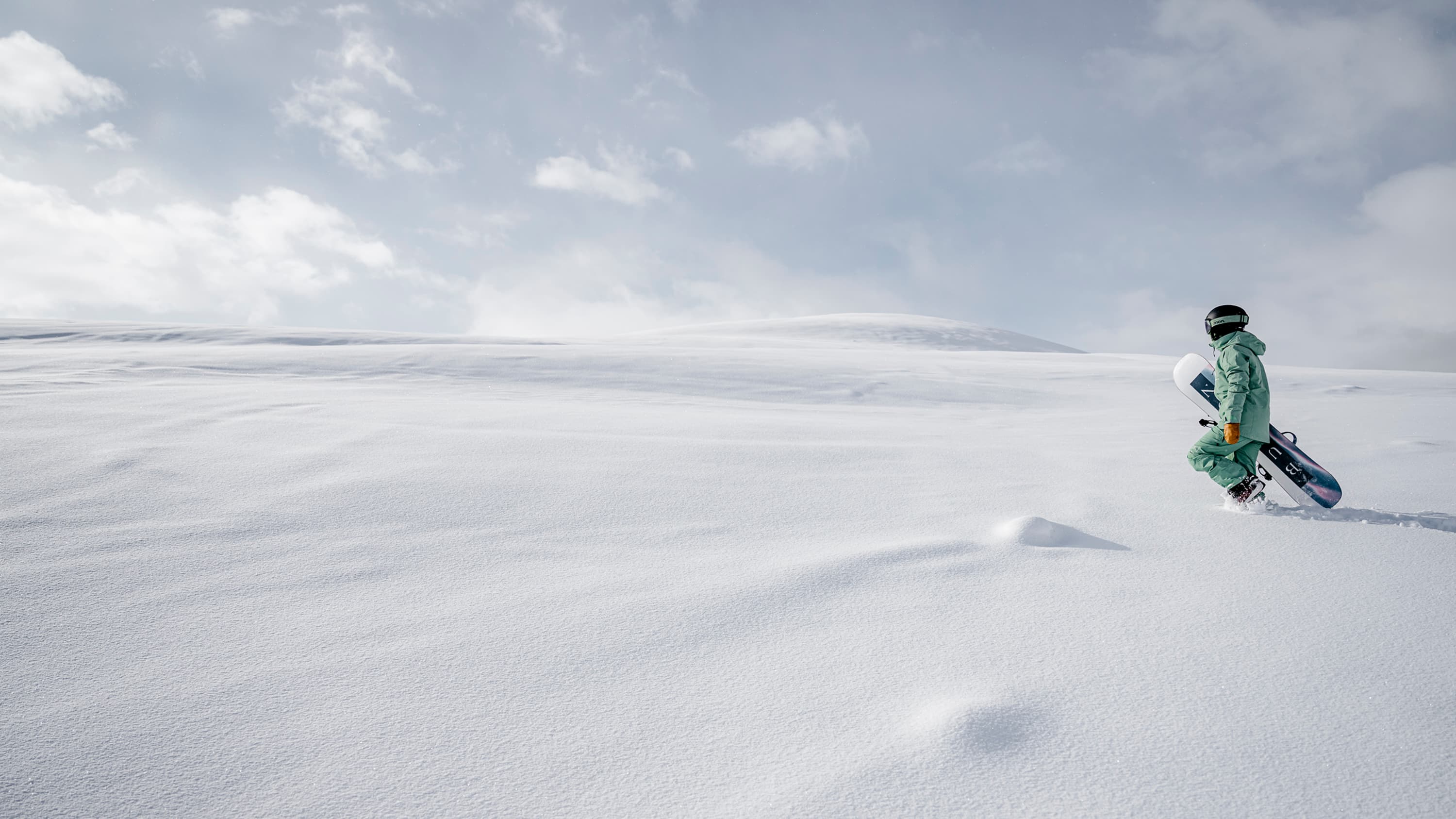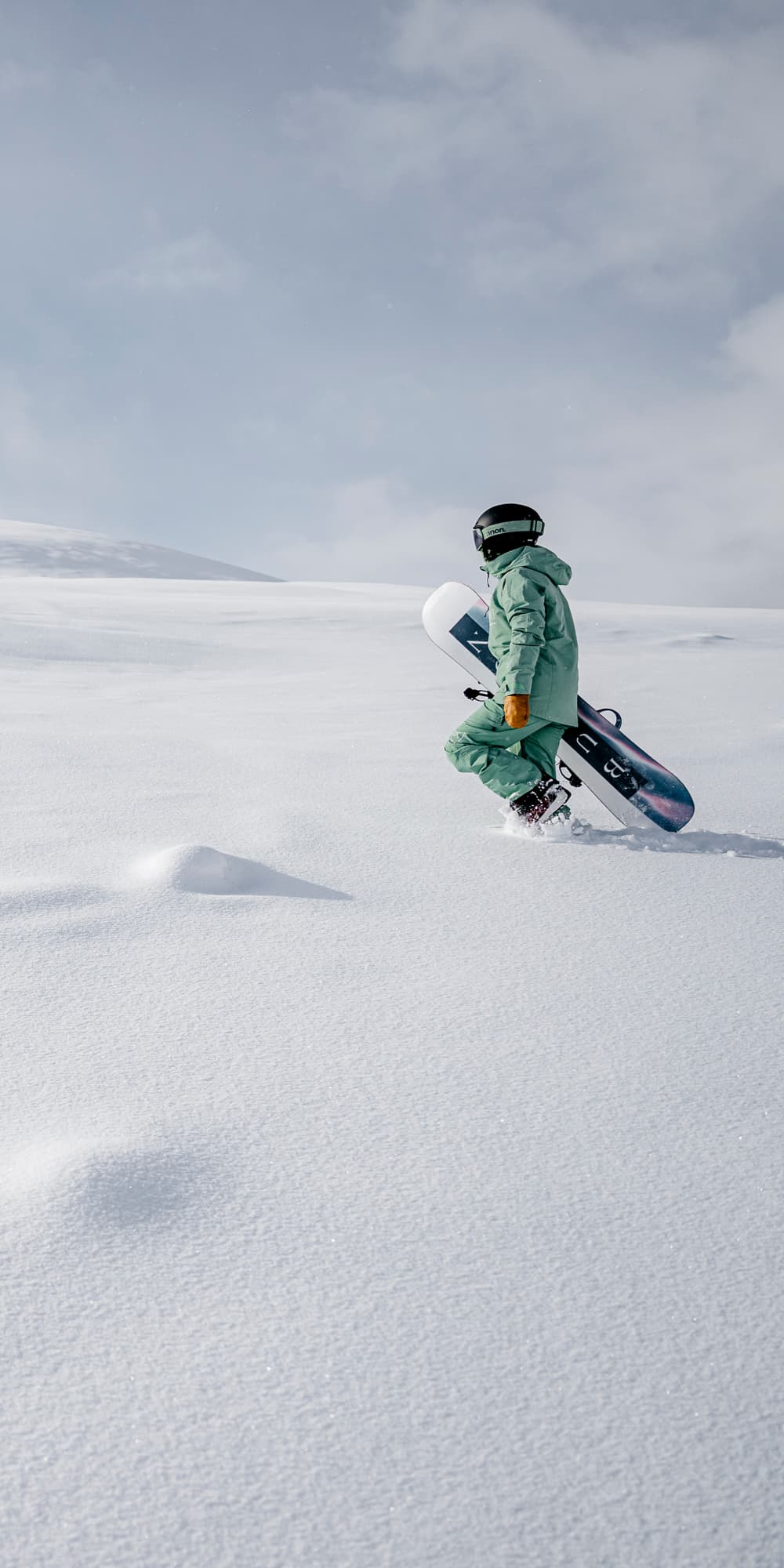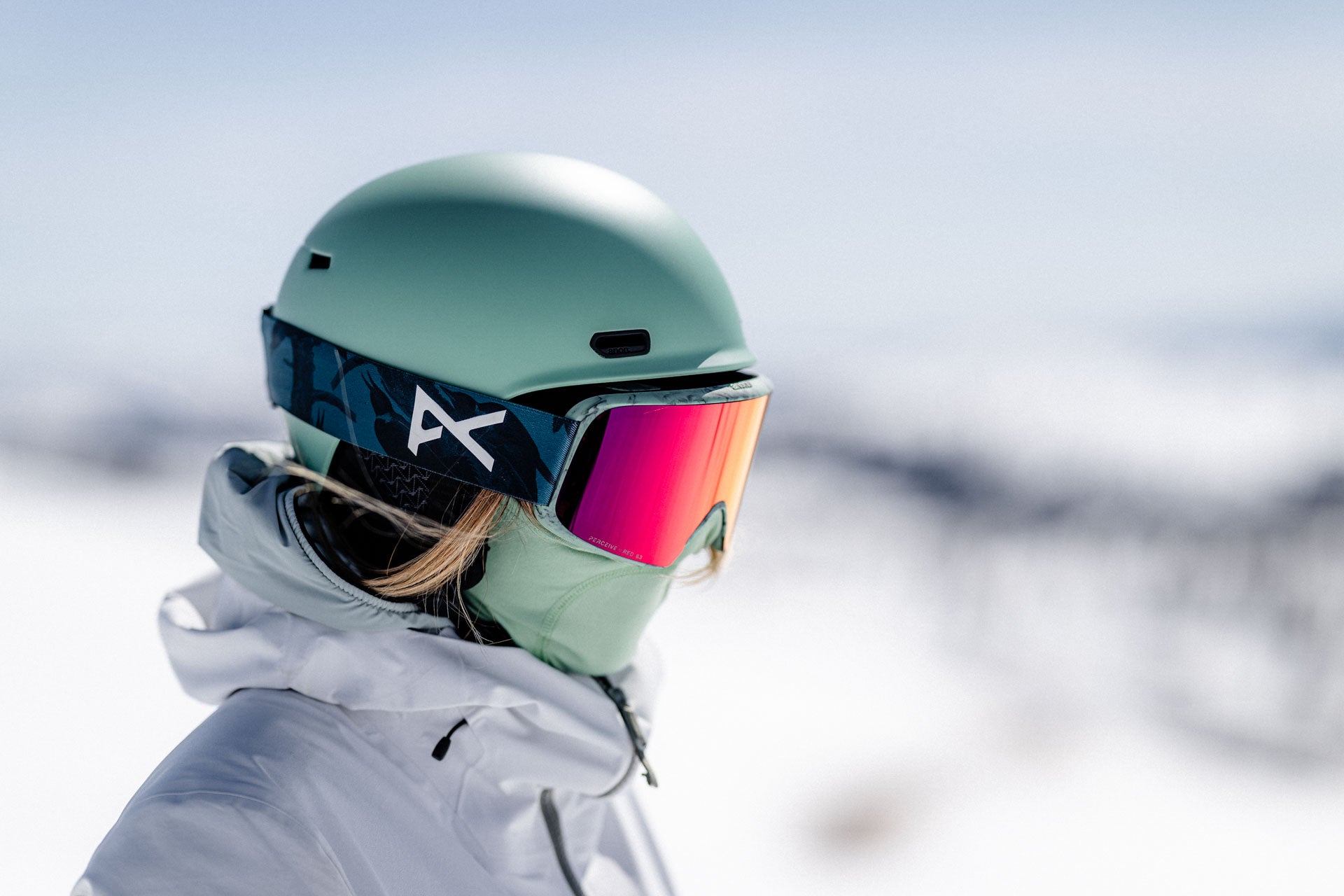
Written by Kimberly MacKenzie
How to Prevent Ski Goggles from Fogging & Anon’s Anti-fog Goggle Lenses
Having clear, unobstructed vision is crucial for winter sports like skiing and snowboarding, and to that point, everyone should understand how to prevent ski goggles from fogging. Trust us, having properly functioning eye protection is about more than just having fun, it’s also about safety. Have you ever tried riding down the entire mountain without goggles when it’s storming? How about riding through gladed terrain where a slight miss-calculated turn could result in a collision with a tree? Bottom line: you need to see clearly to stay safe.
The following guide dives into all the details about fog-free goggle lenses, how to prevent goggles from fogging, and gives some tips and tricks for keeping your high-quality ski and snowboard goggles performing their best, season after season.
- Why do ski and snowboard goggle lenses fog?
- How do anti-fog goggles lenses work?
- How to Prevent Ski and Snowboard Goggles from Fogging
- Anon Anti-fog Goggle Lenses: Technology & Performance
Why do ski and snowboard goggle lenses fog?

Ski and snowboard goggles fog up when warm, moist air—usually from your breath or body heat—gets trapped inside the goggle. When that moisture encounters the colder inner surface of the lens, it condenses into a layer of microscopic water droplets, creating fog. While most fog forms on the inner surface of goggles lenses, moisture or snow on the outer lens can sometimes cause fogging as well.
Goggles commonly get foggy when we get overheated, when our face masks channel our hot breath onto our lenses, or when helmets or face masks block goggle ventilation holes (usually on the top and bottom of the frames), preventing warm humid air from our breath and body heat from escaping.
In most cases, staying cool and making sure your goggle vents have unobstructed airflow will go a long way toward preventing fog. But even with anti-fog tech, some condensation is still possible in extreme conditions or during high-exertion activity.
How do anti-fog goggle lenses work?

Many high-quality snow goggle manufacturers offer anti-fog goggle lenses, which employ various methods to prevent condensation from forming on the inner goggle lens. But not all anti-fog goggle lenses are created equal.
There are three primary anti-fog technologies, and all operate differently.
- Double-layer Goggle Lenses
- Anti-fog Lens Coatings
- Etched, Microtextured Goggle Lenses
Double-layer Goggle Lenses
Double-layer goggle lenses are a foundational anti-fog technology widely used by almost all manufacturers. Double-layer goggle lenses work like a double-paned window; they trap a layer of air between the two lenses which helps insulate the inner lens, keeping it warmer. The warmer the surface of the lens, the harder it is for water vapor to condense on it and form fog. While this anti-fog tech is generally reliable, the seal between the two lenses can eventually fail which will allow moisture to get inside. If that happens, you will need to replace the lenses.
Anti-fog Lens Coating
Chemical anti-fog treatments, which are applied to goggle lenses fall into two categories: hydrophobic or hydrophilic. Hydrophobic coatings aid in repelling water, causing it to bead up and roll off the lens, while hydrophilic coatings attracts water, evenly dispersing it across the lens to reduce fog build-up.
Etched, Micro-textured Goggle Lenses
Etching is combined with anti-fog lens coatings for enhanced anti-fog properties. It’s a chemical scoring process that creates a microscopic texture on the lens surface, providing more surface area for hydrophilic or hydrophobic chemical coatings to adhere to. Chemical anti-fog treatments that are applied to micro-etched goggle lenses are generally more durable, and can last longer with proper care.
All Anon Perceive goggles lenses undergo a nanoscale etching process of the inner lens surface which results in better adhesion and durability of our chemical anti-fog coatings. Nonetheless, you should never touch, rub, or attempt to clean the inner surface of your goggle lenses as this can damage the anti-fog treatment. If your goggle lenses ever fog, remove and air-dry your lens until the fog dissipates. If absolutely necessary, the inner goggle lens can be blotted with your Anon microfiber goggle bag, however, this should be a last-resort option.
How to Prevent Goggle Fog When Skiing or Snowboarding

If you already own ski or snowboard goggles and want to prevent goggle fog, here are three easy preventive steps you can take.
- Manage Your Body Temperature & Avoid Overheating
- Ensure Vents are Clear from Snow and Other Obstructions
- Practice Proper Goggle Care
Manage Your Body Temperature & Avoid Overheating
The number one reason that ski goggles fog up is because of overheating while skiing or snowboarding, which you can manage with the right clothing layering approach.
Second, it’s crucial to keep your face warm without trapping and funneling warm, humid air into your goggles. This is where Anon’s MFI facemasks and MFI-compatible goggles shine. MFI uses rare-earth magnets to connect compatible facemasks to goggles, protecting your face while keeping your goggles fog free.
If you don’t have MFI compatible goggles, choose lightweight face protection that breathes adequately. Avoid tucking facemasks or balaclavas under your goggles, and if you are experiencing goggle fog, you may need to temporarily lower your face covering to vent excess heat and moisture.
Ensure Vents are Clear from Snow and Other Obstructions
Another common reason that goggles fog is because of blocked vents. This can be due to snow and ice in the vents, or because your helmet or facemask is blocking the vents.
If your goggles are fogging, inspect the ventilation holes, which are often located on the top or bottom of the frames. If there is snow or ice clogging these holes, gently clear it away using your fingers. Never poke sharp or hard objects into goggle vents and this may damage the goggle frames or protective foam.
If your goggle vents are free from snow and ice, but they keep fogging while you are riding, your helmet, face mask, or jacket may be blocking the ventilation holes, preventing fresh air from entering. If weather conditions allow, try removing your facemask, or slightly unzipping your jacket near your mouth, to see if this corrects the situation.
Exercise Proper Goggle Care & Storage
- Always allow goggles to fully dry out after skiing or snowboarding. Always dry goggles completely before storing them in a protective microfiber bag or hard case.
- Always keep goggle lenses clean and free from foreign substances.
- Always store your goggles out of direct sunlight, in a cool, dry location. Never touch the inner lens of your goggles. Any contact with the inner lens surface will damage the anti-fog treatment, resulting in sub-optimal performance.
- Avoid leaving goggles in your car for extended periods of time. If you need to leave your goggles in the car for short periods, make sure they are dry, stored in a protective hard case, and out of direct sunlight.
Anon Anti-fog Goggle Lenses: Technology & Performance

Anon goggle lenses deliver 5x the industry standard for anti-fog performance, which is achieved with an 8-step proprietary anti-fog treatment that includes chemical etching in addition to a long-lasting antifog lens coating. All Anon ski and snowboard goggles, regardless of cost, come standard with this anti-fog treatment, because we know how important it is to have clear, fog-free vision when you’re out pillaging pow, or sessioning park features.
Anon Perceive lenses take things a step further, with the addition of proprietary light absorbers to enhance visual definition, as well as oleophobic and hydrophobic coatings which form a barrier against oils and water.
- Perceive Proprietary Color Absorbers: Proprietary color absorbers filter light in two spectrums to alleviate “flat” lighting and sharpen visual awareness. Light attenuation between blue and green improves the ability to distinguish nuances in snowy terrain, while mitigation between green and red light strongly improves overall contrast perception.
- Ultra Moisture and Oil Repellent Lens Coatings: The Perceive hydrophobic coating creates a low-friction layer on the exterior of the lens that increases the surface tension of water, repelling it from the surface. Unobstructed vision is further enhanced by the oleophobic coating that prevents smudging by 80%, reducing fingerprints while facilitating easy cleaning if the lens does get contaminated.
